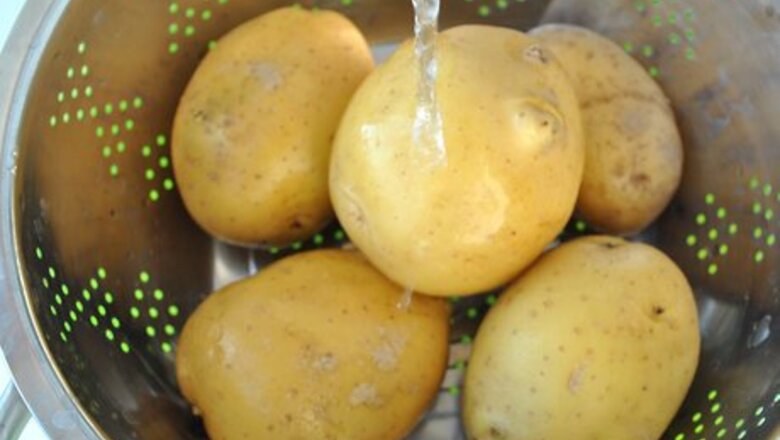
views
Cooking the Potatoes
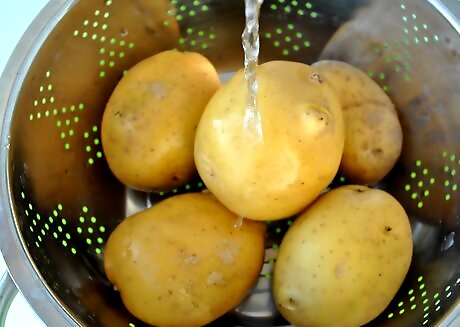
Wash the potatoes. Rinse whatever type of potatoes you like under cold water. Scrub them gently with a vegetable brush. Use the brush to clean off any dirt, paying special attention to the eyes. For small potatoes, try using red skinned or tricolor baby potatoes. For large potatoes, try using white or Yukon Gold potatoes.
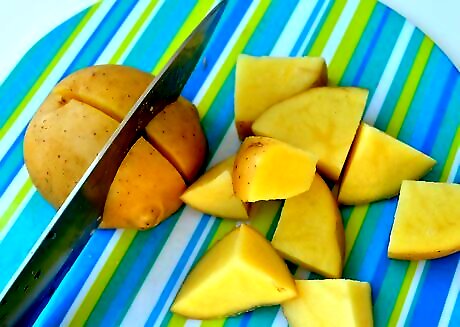
Cut the potatoes into chunks. Slice regular-sized potatoes into half-inch pieces. Cut baby potatoes into halves or quarters. Leave the peels on for this recipe. Place the potato chunks into a bowl of cold water as you’re working if you want to prevent them from browning. The inside of potatoes will turn brown or pink quickly when exposed to oxygen. This effect does not alter the taste of the potatoes. Try to keep potato chunks about the same size, so that they will cook at an equal rate. You can keep the potatoes in the bowl of water overnight, if necessary.
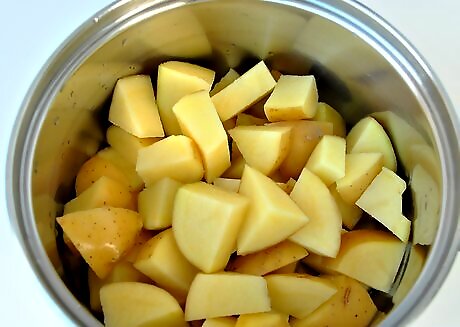
Put the potatoes in a pot. Remove the potato chunks from your work surface or bowl of water. Transfer them into a large, empty pot. Placing the potatoes in the pot before adding water prevents uneven cooking. Boiling water before adding the potato chunks is not recommended, as it can result in the outsides of the potatoes cooking faster than the insides.
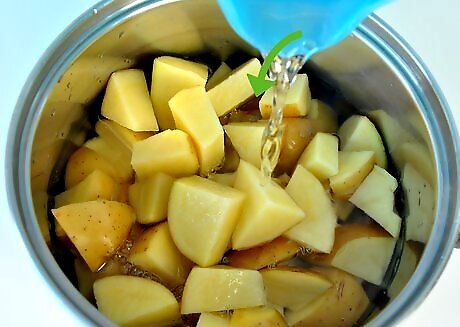
Cover the potatoes with cold, salted water. Pour cold water over the potatoes until the water reaches one inch above the potatoes. Add salt to the water. Use one teaspoon of kosher salt, or half a teaspoon of table salt.
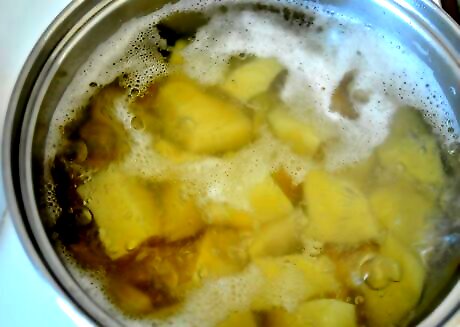
Bring the water to a boil. Leave the pot uncovered. Set the heat to high. Wait until large bubbles are breaking the surface of the water. If you’re in a hurry, you can cover the pot with a lid. Just keep an eye on it. If the water is rising and about to boil over, remove the lid.
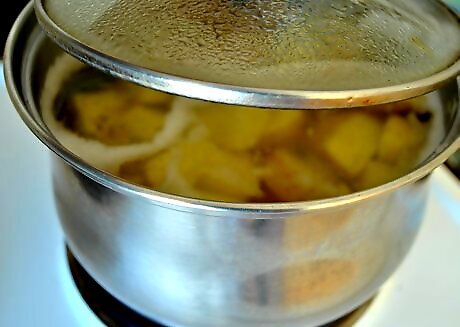
Simmer the potatoes. Reduce the heat to low or medium-low. Cover the pot with a lid. Let it simmer at a gently rolling boil. If the water is not maintaining a gentle boil at low temperature, raise the temperature to medium-low.
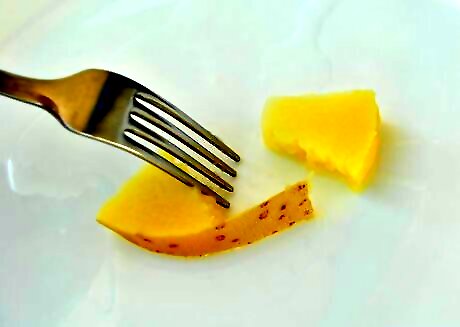
Begin checking doneness at the five minute mark. Look for one of the largest chunks of potato. Pierce it with a fork or paring knife. Do this about every minute until the potatoes are done. The potatoes should be tender, but not too soft. If the fork goes in easily with just a little bit of resistance, the potatoes are fully cooked. Most potatoes will be cooked in ten to twenty minutes. For example, russet potatoes and Yukon gold potatoes cook slightly quicker than red potatoes.
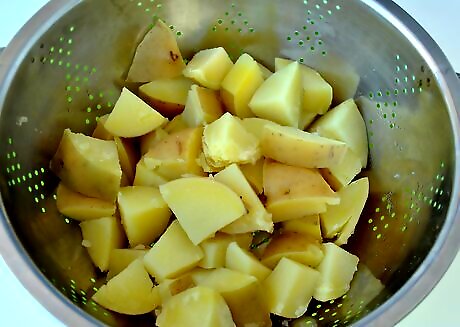
Drain the potatoes immediately. Use a colander to carefully pour out the water and separate the potatoes. Place the colander of potatoes inside of a pot.
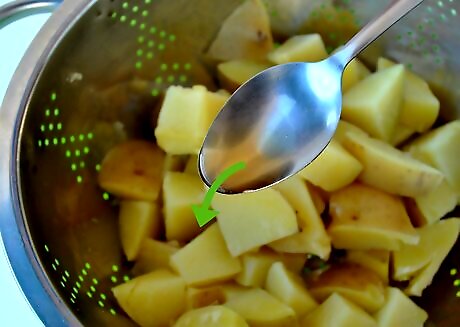
Pour vinegar onto the potatoes. Dress the potatoes while they’re still hot. Putting the colander inside of a pot allows you to preserve the excess vinegar that the potatoes don’t absorb.
Adding Other Vegetables
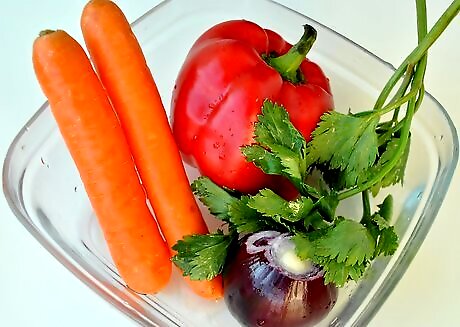
Wash vegetables. Rinse the vegetables well and pat them dry. You can substitute any crunchy vegetables for those recommended, if desired. Dice a red pepper, celery stalks, red onion, and carrots. For example, you may want to substitute radishes, onion, broccoli, cauliflower, or arugula.
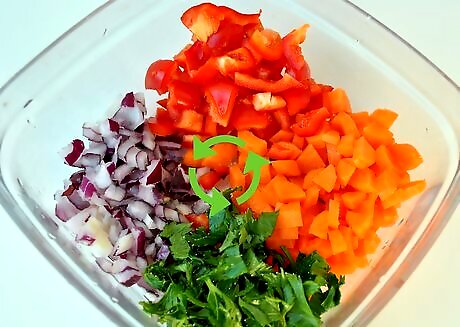
Chop the vegetables. Dice them into bite-sized pieces. Use a chef’s knife or a manual food chopper. Place the vegetables into a large bowl.
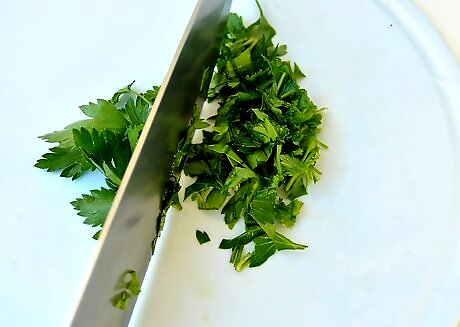
Mince fresh herbs. Rinse parsley well, over a colander in the sink. Over a cutting board, separate the leaves from the stems and place the leaves in a pile. Rock a large chef’s knife over the parsley until it is minced. Alternately, you can use a hand-powered food chopper to mince the parsley. Optionally, add up to 1/4 cup (total) of other fresh herbs such as basil, chives or thyme.
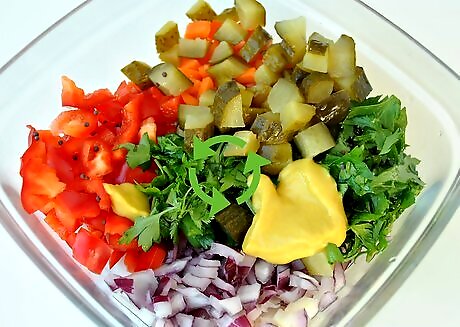
Mix the fresh produce with seasonings and pickled veggies. Pour the vegetables you’ve already chopped into a large bowl. Chop a cupful of pickled vegetables and add them to the bowl. Mix in mustard seed, celery seed, salt and pepper. Instead of mustard seed, you can use two tablespoons of yellow mustard. You can substitute a half cup of sweet pickle relish for the pickled vegetables.
Mixing in the Dressing
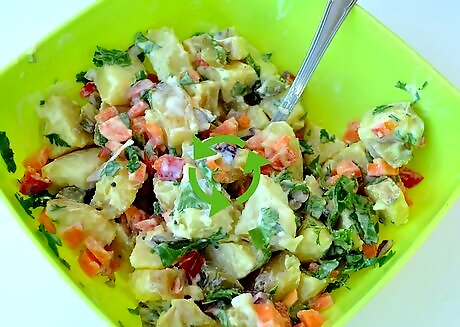
Combine the ingredients with mayonnaise. Allow the potatoes to cool for at least 30 minutes before adding mayonnaise, so that the dressing doesn’t melt and turn oily. Stir the mayonnaise, vegetables, herb and seasoning together. Add the potatoes and excess vinegar from the pot. Gently toss the contents of the bowl. If you don’t want a mayonnaise base, use one cup of reduced-calorie ranch salad dressing. Another option to use instead of mayonnaise is three teaspoons of honey and the juice of one and a half lemons. For a mayonnaise mixture, use half the recommended amount of mayonnaise and half light sour cream.
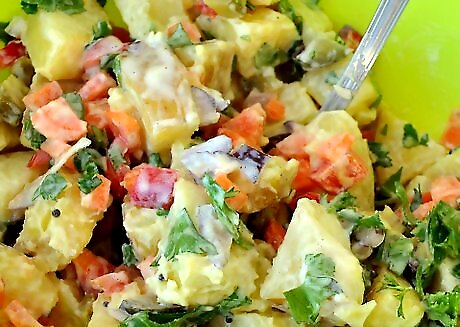
Taste the salad. Take a bit of the salad on a spoon and evaluate the flavor. Add more vinegar, salt or pepper, if needed. If the salad isn’t tangy enough, add a bit of yellow mustard or freshly-squeezed lemon juice. If the salad tastes bland, add some kosher salt or freshly ground black pepper.
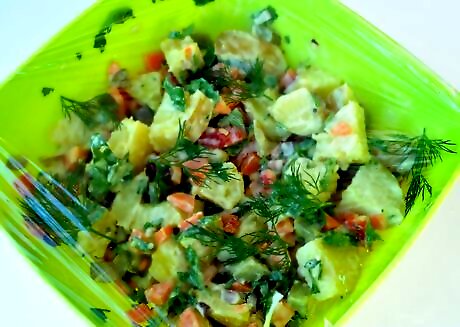
Refrigerate the salad. Garnish the top of the salad with dill or parsley, if desired. Place the salad in an airtight container. Let it chill in the refrigerator for four to twenty-four hours before serving.
Serving the Potato Salad
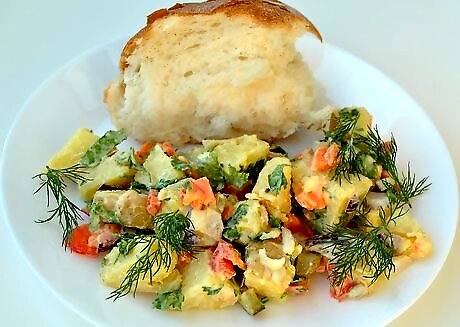
Serve bread. Add crusty bread to the table. Optionally, give each person a small dish of olive oil to dip the bread into. Bread is a great compliment to potato salad. Instead, you could serve potato salad sandwiches, by putting potato salad on hamburger buns and adding sliced tomato and leaves of lettuce.
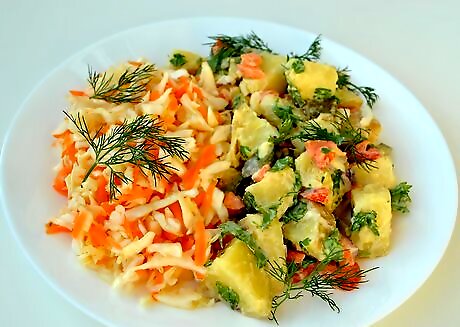
Serve complimentary foods. Choose side dishes that go well with potato salad. For instance, baked beans, pasta salad or cole slaw. Serve a main dish that is popular for picnics or barbeques, such as hamburgers. Consider serving pie or cookies for dessert!
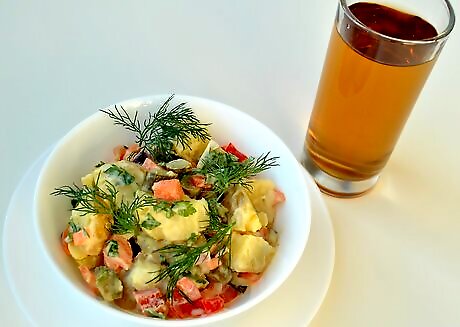
Choose beverages to serve. Beer that is full of flavor pairs nicely with potato salad. For non-alcoholic beverages, try lemonade or iced tea. For example, try a German wheat beer or a Bavarian-style bear that is light amber in color.
















Comments
0 comment